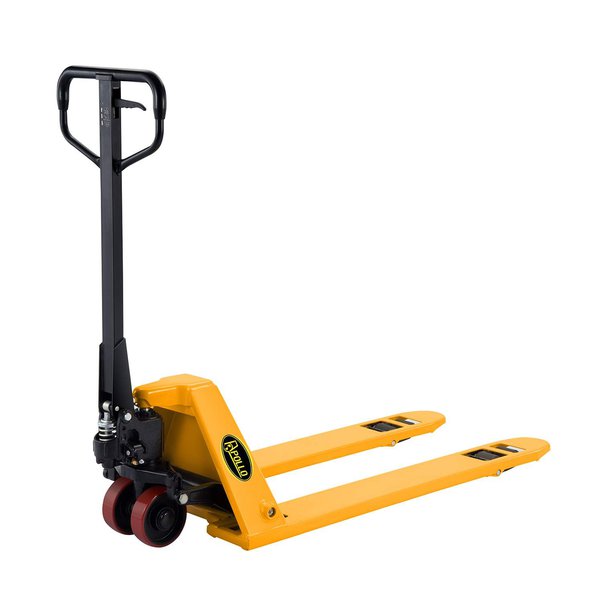Investing in new material handling equipment is a critical decision for any business, as it can significantly impact operational efficiency, safety, and overall productivity. With a wide array of options available, choosing the right equipment requires careful consideration of several key factors.
Here’s a comprehensive guide to help you make an informed decision when purchasing new material handling equipment.
1. Operational Needs
Understanding your specific operational requirements is the foundation of selecting the right material handling equipment:
- Type of Equipment: Identify the type of equipment that best suits your needs, whether it’s forklifts, pallet jacks, conveyors, or automated systems. The choice depends on the nature of your materials, handling processes, and facility layout.
- Load Capacity: Determine the weight and size of the materials you need to handle. Ensure that the equipment you choose can comfortably manage the load without compromising safety or performance.
- Application: Consider the environment in which the equipment will operate. For instance, if you’re handling food products, you might need equipment that meets specific hygiene standards.
2. Safety Features
Safety is paramount when selecting new material handling equipment. Evaluate the safety features to ensure they align with industry standards and protect your employees:
- Built-in Safety Mechanisms: Look for equipment with features such as automatic braking systems, load backrests, and safety guards to minimize the risk of accidents.
- Operator Training: Ensure that the equipment comes with comprehensive training programs or resources to educate operators on safe handling and operation.
- Compliance with Standards: Verify that the equipment meets relevant safety standards and regulations, such as OSHA (Occupational Safety and Health Administration) guidelines.
3. Ergonomics and Ease of Use
The ergonomics and user-friendliness of the equipment can affect operator comfort and productivity:
- Operator Comfort: Choose equipment that offers adjustable controls, comfortable seating, and good visibility to reduce operator fatigue and enhance efficiency.
- Ease of Operation: Look for intuitive controls and features that simplify operation and minimize the learning curve for new operators.
- Maintenance Accessibility: Ensure that the equipment is designed for easy maintenance and servicing, with accessible components and clear maintenance instructions.
4. Cost and Budget
Cost is a significant factor in the decision-making process, but it’s essential to balance budget constraints with the need for quality and functionality:
- Initial Purchase Cost: Compare prices from different suppliers and consider the overall value rather than just the purchase price. Sometimes, a higher initial cost can lead to lower long-term expenses due to better durability and efficiency.
- Total Cost of Ownership: Factor in ongoing costs such as maintenance, repair, and energy consumption. Evaluate the total cost of ownership to understand the long-term financial implications of your purchase.
- Financing Options: Explore financing options if needed. Many suppliers offer leasing or financing plans that can help manage upfront costs.
5. Durability and Reliability
Investing in durable and reliable equipment is crucial for minimizing downtime and maximizing productivity:
- Build Quality: Assess the build quality and materials used in the equipment.Seek for respectable companies that produce dependable and long-lasting goods.
- Warranty and Support: Verify the warranty’s conditions and the availability of post-purchase assistance. In the event of problems, a thorough warranty and prompt support can offer comfort and aid.
6. Technology and Automation
Technology and automation can enhance the efficiency and accuracy of material handling processes:
- Automation Features: Consider equipment with automation capabilities, such as automated guided vehicles (AGVs) or robotics, if they align with your operational needs.
- Integration with Existing Systems: Ensure that the new equipment can integrate seamlessly with your existing systems, such as warehouse management software or inventory systems.
- Future-Proofing: Evaluate whether the equipment can be upgraded or adapted to future technological advancements, helping to extend its lifespan and relevance.
7. Supplier Reputation and Support
Choosing a reputable supplier is crucial for ensuring the quality of the equipment and the level of support you receive:
- Supplier Reputation: Research the supplier’s reputation and customer reviews. A well-regarded supplier is more likely to provide high-quality equipment and reliable service.
- Customer Service: Evaluate the level of customer service and support offered by the supplier. Look for responsiveness, technical support, and the availability of spare parts.
8. Environmental Considerations
Consider the environmental impact of the equipment and its energy efficiency:
- Energy Efficiency: Opt for equipment that is energy-efficient to reduce operational costs and minimize environmental impact.
- Environmental Regulations: Ensure that the equipment complies with relevant environmental regulations and standards, such as emissions and waste disposal requirements.
Buy New Material Handling Equipment
Buying new material handling equipment is a significant investment that requires careful consideration of various factors.
By evaluating your operational needs, safety features, ergonomics, cost, durability, technology, supplier reputation, and environmental considerations, you can make an informed decision that enhances efficiency, safety, and productivity in your operations.
Investing the time and effort into choosing the right equipment will pay off in the long run, ensuring smooth and effective material handling processes in your business.

